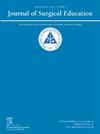Orthopaedic Residency Compensation and Cost of Living: Are Orthopaedic Residents Financially Strained?
IF 2.6
3区 医学
Q1 EDUCATION, SCIENTIFIC DISCIPLINES
引用次数: 0
Abstract
Introduction
Medical education imposes a financial burden on trainees. Given that cost-of-living varies across geographical regions, understanding its relationship with resident compensation can inform about the finances of residents. We investigated: (1) How does compensation for orthopaedic surgery residents vary across regions? (2) How does compensation for orthopaedic surgery residents vary with respect to cost of living? (3) What is the extent of surplus income for residents after accounting for hours worked? (4) What are the predictors of annual income for orthopaedic residents?
Material and methods
Using the American Medical Association FREIDA database, we collected weekly work hours, location, program type, moonlight allowance, and geographic region for 190 nonmilitary orthopaedic programs. We used institutional websites to collect compensation information. We utilized SmartAsset to estimate take-home pay. We collected reputation ranking from Doximity. Lastly, we collected the Required Annual Income (RAI), a proxy for cost of living, and living hourly wage from the MIT Living Wage database for each program. We estimated Surplus Income (SI) and Hourly Surplus Income (HSI).
Results
Compensation and take-home pay varied significantly across regions (p < 0.001). Additionally, we found a weak positive correlation between RAI and PGY-1 compensation (R2 = 0.34). Pretax SI ranged from $24,600 to $35,200, while HSI hours ranged from $0.27 to $2.86 per hour across PGY levels. Standardized to an 80-hour work week, the HSI ranged from −$2.55 to −$0.37 per hour. Doximity reputation ranking, RAI, and region were significant predictors (<0.001).
Conclusions
Despite significant variations across geographic regions, a weak correlation between RAI and compensation indicates that residents in high-cost areas face challenges in offsetting relatively higher expenses. Additionally, our research reveals that orthopaedic residents may be financially strained.
骨科住院医师补偿和生活费用:骨科住院医师是否经济紧张?
医学教育给受训者带来了经济负担。鉴于生活费用因地理区域而异,了解其与居民补偿的关系可以了解居民的财务状况。我们调查了:(1)骨科住院医师的薪酬在不同地区有何差异?(2)骨科住院医师的补偿如何随生活费用的变化而变化?(3)居民扣除工时后的剩余收入有多大?(4)骨科住院医师年收入的预测因子是什么?材料和方法:使用美国医学协会FREIDA数据库,我们收集了190个非军事骨科项目的每周工作时间、地点、项目类型、月光津贴和地理区域。我们利用机构网站收集薪酬信息。我们使用SmartAsset来估算实得工资。我们从Doximity收集了声誉排名。最后,我们从麻省理工学院生活工资数据库中收集了每个项目的所需年收入(RAI),这是生活成本的代表,以及每小时的生活工资。我们估算了剩余收入(SI)和小时剩余收入(HSI)。结果:不同地区的薪酬和实得工资差异显著(p 2 = 0.34)。税前恒生指数从24,600美元到35,200美元不等,而恒生指数的小时数从每小时0.27美元到2.86美元不等。按照每周工作80小时的标准,恒生指数在每小时- 2.55美元至- 0.37美元之间波动。邻近声誉排名、RAI和地区是显著的预测因子(结论:尽管地理区域之间存在显著差异,但RAI与薪酬之间的弱相关性表明,高成本地区的居民在抵消相对较高的费用方面面临挑战。此外,我们的研究表明,骨科住院医生可能在经济上很紧张。
本文章由计算机程序翻译,如有差异,请以英文原文为准。
求助全文
约1分钟内获得全文
求助全文
来源期刊

Journal of Surgical Education
EDUCATION, SCIENTIFIC DISCIPLINES-SURGERY
CiteScore
5.60
自引率
10.30%
发文量
261
审稿时长
48 days
期刊介绍:
The Journal of Surgical Education (JSE) is dedicated to advancing the field of surgical education through original research. The journal publishes research articles in all surgical disciplines on topics relative to the education of surgical students, residents, and fellows, as well as practicing surgeons. Our readers look to JSE for timely, innovative research findings from the international surgical education community. As the official journal of the Association of Program Directors in Surgery (APDS), JSE publishes the proceedings of the annual APDS meeting held during Surgery Education Week.
 求助内容:
求助内容: 应助结果提醒方式:
应助结果提醒方式:


